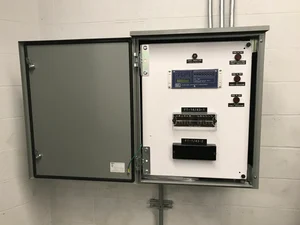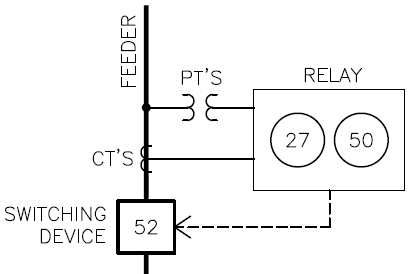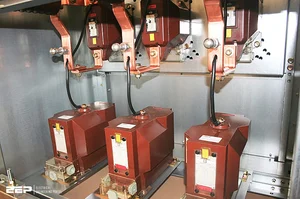Protective relays are a sophisticated field within electrical engineering and contracting, often perceived as daunting, but they don't have to be! This series of three articles aims to introduce the basics of relaying to those in the solar and energy storage industries who aren't engineers.
---
**Introduction to Relays #1 - What Are Relays, CTs, & PTs? (Below on This Page)**
**Introduction to Relays #2 - ANSI/IEEE Relay Device Numbers**
**Introduction to Relays #3 - What Does SEL Stand For?**
---
**What Is a Relay?**
In the broad spectrum of electrical and electronic terminology, the term "relay" can refer to various concepts. However, within the solar industry, "relay" specifically denotes a "protective relay."
A protective relay monitors a circuit's voltage, current, or frequency. When it detects an abnormal condition, the relay triggers a switch to either open or close, thereby isolating the system to prevent further issues.
Decades ago, relays were electromechanical devices. Today, modern relays are microprocessor-based, essentially computers housed in a compact enclosure.

---
**Functionality**
The primary function of a relay is to swiftly disconnect any equipment that might sustain damage or disrupt the system's normal operations. Protective relays safeguard electrical systems in two key ways:
1. **Preventing System Failures**: By detecting potential issues early, relays help avoid costly damages.
2. **Mitigating Effects of Failure**: If a failure occurs, relays minimize its impact on the overall system.
Relays continuously monitor current, voltage, and frequency within a circuit. When a monitored parameter strays beyond the predetermined limits, the relay sends a signal to a connected device—like a switch—to actuate before the electrical system suffers harm.
The "electrical system" protected by relays could be:
- A solar photovoltaic (PV) or energy storage system,
- A building or facility,
- Or even the utility's grid.
For instance, an overcurrent relay on a feeder line monitors the current. If the current exceeds a pre-set threshold, the relay signals the circuit breaker to trip, halting the current flow.
Another example is the reverse power relay, which safeguards the utility's grid. Should the current feeding back into the grid surpass the utility's limit, the relay automatically shuts down the solar system to protect utility equipment.
An over-voltage relay is frequently employed to shield inverters and transformers in large-scale solar PV installations. Detecting voltage spikes, the relay isolates the system to prevent exposure to harmful high voltages.
---
**Comparison to Circuit Breakers or Fuses**
While circuit breakers and fused switches also interrupt circuits when current becomes excessive, their functionality is largely confined to this task. They serve primarily as overcurrent devices with limited adjustability.
By contrast, relays offer far greater capabilities:
- **Multifunctional**: Relays can monitor not just current but also voltage, frequency, power factor, and more. Utilities often require solar systems to remain within specific voltage and frequency ranges. If a PV system produces outside these parameters, the relay ensures the system disconnects before negatively impacting the grid.
- **Programmable and Flexible**: Modern relays are equipped with custom programs tailored by engineers to dictate precise operational behavior. Even identical models of relays can be programmed uniquely for different projects.
- **Component-Based Design**: Unlike circuit breakers, which integrate both sensing units and switches into one unit, relays typically consist of separate components—relays, switches, current transformers (CTs), and potential transformers (PTs). While some relays may share the same housing, they remain distinct elements rather than integrated units.

---
**Understanding CTs**
CTs, or current transformers, measure the current flowing through a circuit. High currents in circuits exceed what relays can safely handle, so CTs reduce the current to manageable levels. For example, an 800:5 ratio CT converts currents ranging from 0 to 800 amps down to 0 to 5 amps, making them safe for connection to the relay.

---
**Understanding PTs**
PTs, or potential transformers, measure voltage and frequency in circuits. Similar to CTs, PTs step down high voltages to safer levels for relay connections.

---
**Switching Mechanism**
The switching device opens or closes the circuit. Disconnecting a circuit due to an abnormality is commonly termed "tripping" the circuit.
In utility-scale systems, the switching mechanism often involves reclosers or vacuum circuit breakers operating at medium or high voltages. In commercial-scale systems, it's usually a 480V or 208V circuit breaker or disconnect switch with a shunt trip option.
---
**Conclusion**
At its core, the idea behind relaying is straightforward. Yet, it delves into complexities swiftly. Developers and project managers don't need to grasp every technical detail to perform their roles effectively. That's where experienced engineers come in, such as those at Pure Power. If your project requires assistance with relays, click [here](#) to learn more or contact us today.
---
**Attention Engineers!**
If you're passionate about technical topics like this, Pure Power could be the perfect fit for you. Our team of 80 engineers designs over 2,000 commercial and utility-scale solar projects annually. Surrounding yourself with such expertise can significantly boost your career trajectory.
Explore our available positions [here](#).
---
This article aimed to simplify complex concepts for professionals in the solar and energy storage sectors without prior engineering backgrounds. Let me know if you'd like further clarification or additional insights!
Miners
Mining machines are computers used to earn bitcoins. Such computers generally have professional mining crystals, and most of them work by burning graphics cards, which consumes a lot of power. The user downloads the software with a personal computer and then runs a specific algorithm. After communicating with the remote server, the corresponding bitcoin can be obtained, which is one of the ways to obtain bitcoin.
(Bitcoin) is a network virtual currency generated by open source P2P software. It does not rely on the issuance of a specific currency institution, and is generated by a large number of calculations of a specific algorithm. The economy uses a decentralized database composed of many nodes in the entire P2P network to confirm and record all transaction behaviors. The decentralized nature of P2P and the algorithm itself can ensure that the currency value cannot be artificially manipulated through mass production.
Any computer can become a mining machine, but the income will be relatively low, and it may not be able to mine one in ten years. Many companies have developed professional mining machines, which are equipped with special mining chips, which are dozens or hundreds of times higher than ordinary computers.
bitcon miner, mobile bitcon miner, bitcon miners
Guangxi Nanning King Green Smart Co., Ltd. , https://www.smartliferobot.com